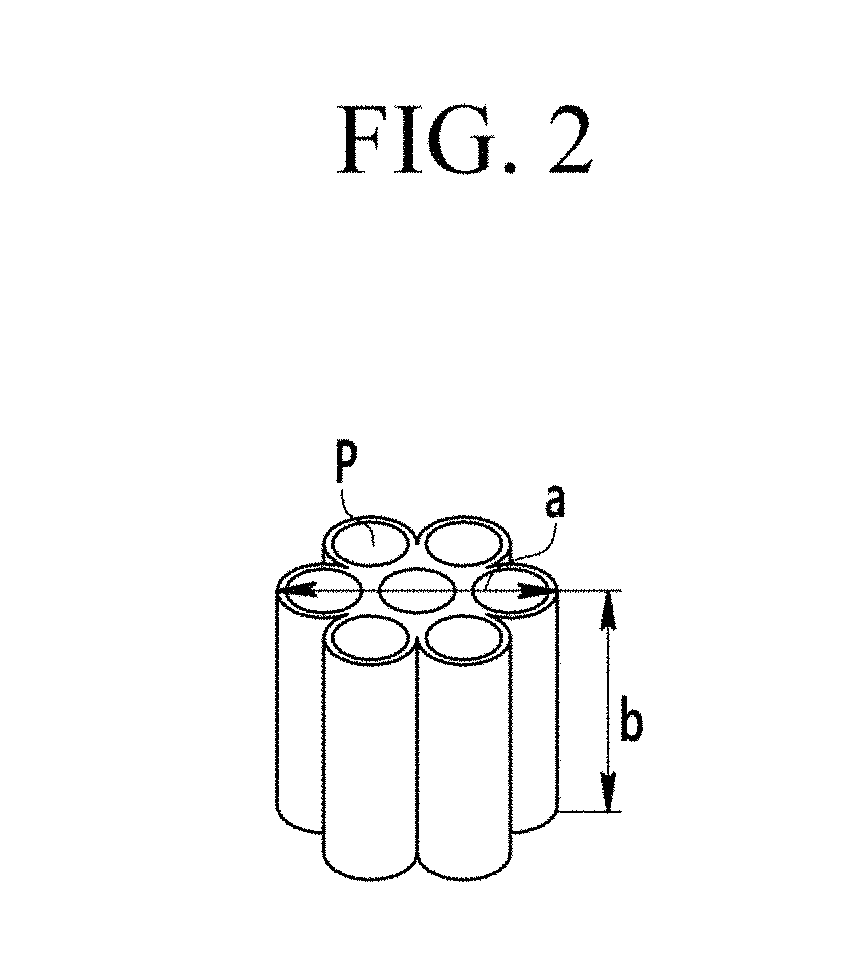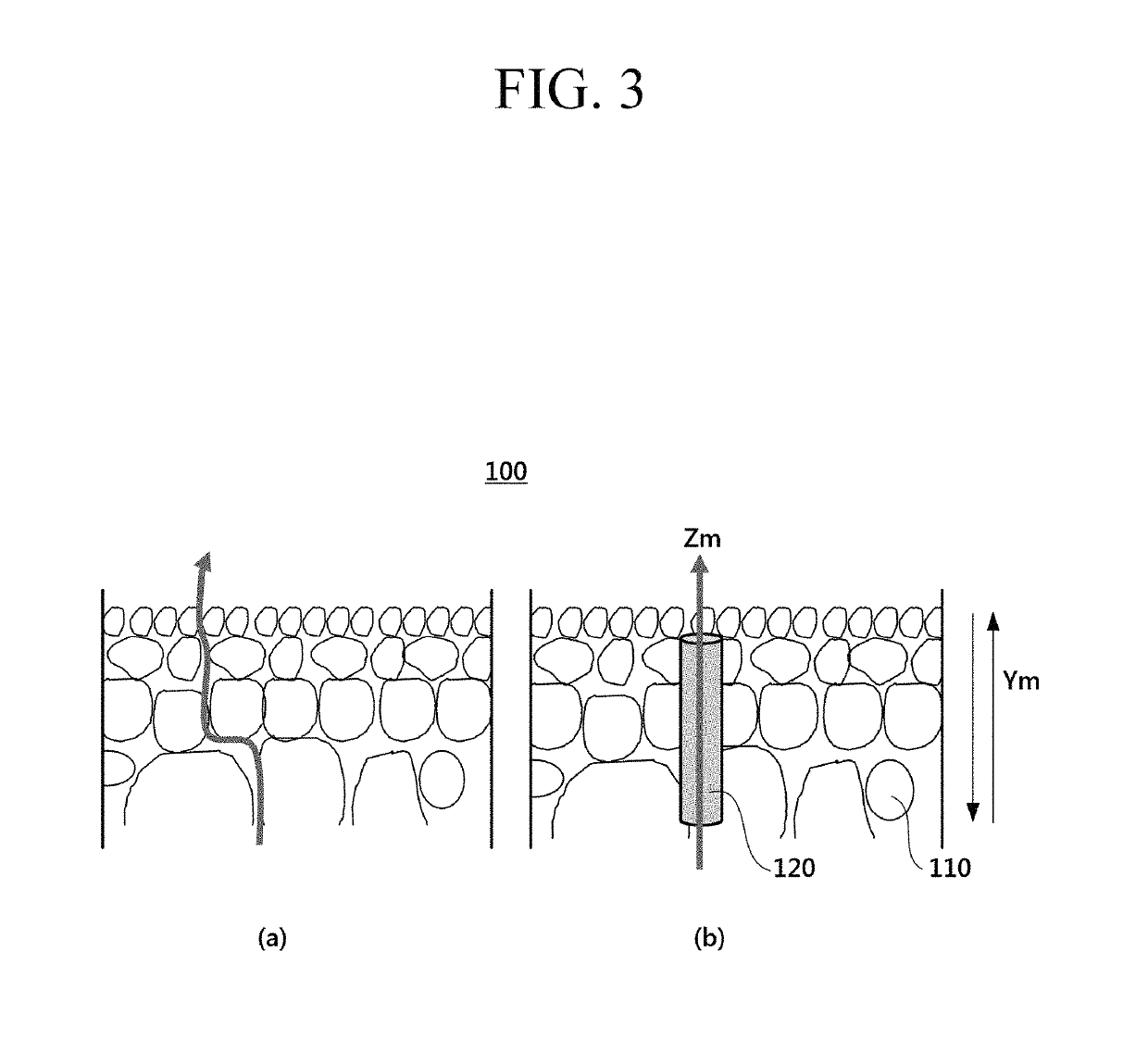Composite membrane, semi-permeable membrane including the composite membrane, and water treatment device including the semi-permeable membrane
a technology of composite membrane and membrane, which is applied in the field of composite membrane, semi-permeable membrane including the composite membrane, water treatment devices including the semi-permeable membrane, etc., can solve the problems of difficult pore control, low hydrophilicity of cnt, and limit the satisfaction of these two requirements, and achieve low structural resistance and high hydrophilicity.
- Summary
- Abstract
- Description
- Claims
- Application Information
AI Technical Summary
Benefits of technology
Problems solved by technology
Method used
Image
Examples
example 1
Preparation of Porous Inorganic Particle
[0103]20 mL of tetraethyl orthosilicate is mixed into a hydrochloric acid mixed solution including 60 mL of hydrochloric acid at 40° C. Surfactants P123 and F127 are added thereto to provide a mole ratio of a hydrophilic group and a hydrophobic group of 40:60, and maintained at 40° C. and agitated for 40 hours. The formed particles are filtered and then baked at 550° C. for 5 hours to provide porous inorganic particles.
[0104]The sample of porous inorganic particles is prepared, 10 particles observed in a SEM photograph (magnification 20,000) of the sample are randomly chosen, and each particle is measured for length in the direction parallel to a channel and a maximum length in the direction perpendicular to the channel. Then each value is arithmetically averaged and respectively determined as an “average length in the direction parallel to the channel” and an “average maximum length in the direction perpendicular to the channel.”
[0105]FIG. 6 ...
example 2
Manufacture of Composite Membrane
[0107]13 g of polysulfone, 87 g of N-dimethylformamide, and 5 g of the porous inorganic particles obtained from Example 1 are mixed to provide a polymer solution.
[0108]Subsequently, the polymer solution is casted on a polyester non-woven fabric in a thickness of 150 μm, and then the phase is inverted in deionized water at 25° C. to provide a composite membrane.
PUM
| Property | Measurement | Unit |
|---|---|---|
| pore size | aaaaa | aaaaa |
| length | aaaaa | aaaaa |
| length | aaaaa | aaaaa |
Abstract
Description
Claims
Application Information
 Login to View More
Login to View More - R&D
- Intellectual Property
- Life Sciences
- Materials
- Tech Scout
- Unparalleled Data Quality
- Higher Quality Content
- 60% Fewer Hallucinations
Browse by: Latest US Patents, China's latest patents, Technical Efficacy Thesaurus, Application Domain, Technology Topic, Popular Technical Reports.
© 2025 PatSnap. All rights reserved.Legal|Privacy policy|Modern Slavery Act Transparency Statement|Sitemap|About US| Contact US: help@patsnap.com



